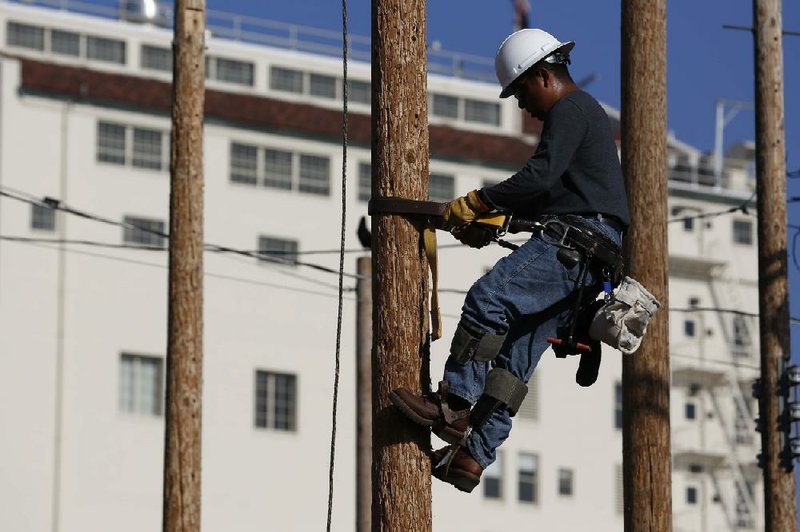WASHINGTON - The number of people seeking U.S. unemployment benefits declined last week to the lowest level in almost seven years, falling 32,000 last week to a seasonally adjusted 300,000.
The Labor Department said Thursday that the four-week average of applications, a less volatile measure, fell4,750 to 316,250.
“We’re moving in the right direction,” said Thomas Simons, a money market economist at Jefferies LLC in New York. “The underlying trend for claims is a gradual drift lower. Looking at the entire history of claims, you don’t get too far beyond this level, even in a very healthy economy.”
Fewer Americans sought benefits last week than at any point since the recession began at the end of 2007.
Applications are at their lowest level since May of that year.
Applications are a proxy for layoffs. The decrease suggests that employers expect stronger economic growth in the coming months and are holding onto their workers.
But Ian Shepherdson, chief economist at Pantheon Macroeconomics, cautioned that the drop-off might be smaller than it appears. He noted that the Easter holiday, which moves from year to year, might have distorted the seasonal adjustments.
“We need to see a few more weeks’ numbers before we can be sure where the trend now stands,” Shepherdson said in a client note. “Our core view is that claims are drifting gently downwards.”
Employers added 192,000 jobs in March, the Labor Department said last week. That follows gains of 197,000 in February, as the unemployment rate stayed at 6.7 percent for the second-straight month.
Snowstorms and freezing temperatures in January and December shut down factories, kept shoppers away from stores and reduced home-buying. That cut into growth and hiring. Employers added 144,000 jobs in January and only 84,000 in December.
More jobs and higher incomes will be needed to spur better overall economic growth. For now, economists suspect the bad weather contributed to weak growth of 1.5 percent to 2percent at an annual rate in the January-March quarter. But as the weather improves, most analysts expect growth to rebound to near 3 percent.
The number of people continuing to receive unemployment benefits decreased by 62,000 to 2.78 million in the week ending March 29, the lowest since January 2008.
The unemployment rate among people eligible for benefits fell to 2.1 percent in the week ending March 29 from 2.2 percent the previous week, Thursday’s report showed.
Even as the economy improves, some companies such as Sprint Corp. are still shrinking payrolls.
The third-largest U.S.
wireless carrier said in an internal announcement on March 18 that 1,600 customer-service workers at U.S. locations were being laid off. The action affected workers at six call centers.
Even so, the U.S. should lead global growth this year thanks to a longer period of record-low interest rates orchestrated by the Federal Reserve, stronger private demand and the end of a fiscal drag that slowed economic improvement in 2013, the International Monetary Fund said earlier this week Information for this article was contributed by Josh Boak of The Associated Press; and by Victoria Stilwell and Ainhoa Goyeneche of Bloomberg News.
Business, Pages 27 on 04/11/2014
